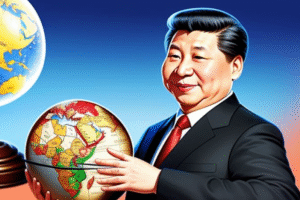$ICLN $TAN $FAN
#GreenEnergy #RenewableEnergy #CleanEnergy #SolarPower #WindEnergy #SustainableInvesting #ESGInvesting #ClimateChange #EnvironmentalProtection #RenewableStocks #CleanTech #FinancialMarkets
Over the past couple of years, renewable energy stocks have undergone significant fluctuations, largely attributed to the macroeconomic shifts post-Covid. High interest rates have particularly taken their toll, as investors recalibrate their portfolios towards less risky assets. The attraction to renewable energy investments had previously been fueled by a global push towards sustainability and a transition away from fossil fuels. However, this allure has been dampened by the fiscal realities of the current era. Among those feeling the crunch is the iShares Global Clean Energy ETF (ICLN), considered a significant indicator for the sector. As the world’s largest green energy ETF, ICLN’s performance is often seen as a bellwether for the health of renewable investments. Sadly, it has posted a -13.9% return over the past year, starkly contrasting with the broader market’s, exemplified by the S&P 500’s 10.7% gain.
This downtrend isn’t isolated to ICLN alone. Other segments within the renewable sector have also faced hardship. Specifically, the Invesco Solar ETF (TAN) has experienced a -25.0% decline, indicating severe headwinds for solar energy investments. Likewise, the wind energy sector, represented by the First Trust Global Wind Energy ETF (FAN), has not been immune to these challenges. Such downturns signal a broader market skepticism towards the immediate profitability and stability of renewable energy stocks amid rising interest rates and economic uncertainty. Despite these short-term setbacks, the fundamentals of the renewable energy market remain solid, underpinned by long-term drivers such as technological advancements, regulatory support, and growing societal emphasis on sustainability.
The current lull in renewable energy stock performance could be perceived as a temporary blip rather than a long-term trend. Private investors, particularly those with a focus on green energy, appear undeterred by the market’s short-term volatility. There is a growing consensus that as the global economy stabilizes and interest rates eventually plateau, the renewable sector’s intrinsic value will come to the fore. This perspective is bolstered by governmental policies worldwide that continue to support green energy adoption through subsidies, tax incentives, and mandates. These factors present a potential upside for investors willing to weather the current storm, suggesting that now might be an opportune time to buy into the sector while prices are low.
Moreover, as traditional oil and gas companies gradually pivot towards renewable sources or divest from green energy initiatives under pressure to reduce carbon footprints, private capital is stepping in to fill the void. This movement is not only a testament to the sector’s resilience but also to the growing recognition of renewable energy as pivotal to achieving a sustainable future. Investment vehicles like ICLN, TAN, and FAN offer retail and institutional investors alike an accessible entry point into this transition, embodying the potential for substantial long-term returns as the world accelerates its shift towards cleaner energy solutions. Understanding the cyclical nature of financial markets, the current downturn in renewable energy stocks may very well set the stage for a robust resurgence, driven by innovation, sectoral growth, and the increasing imperatives of climate change mitigation.







Comments are closed.